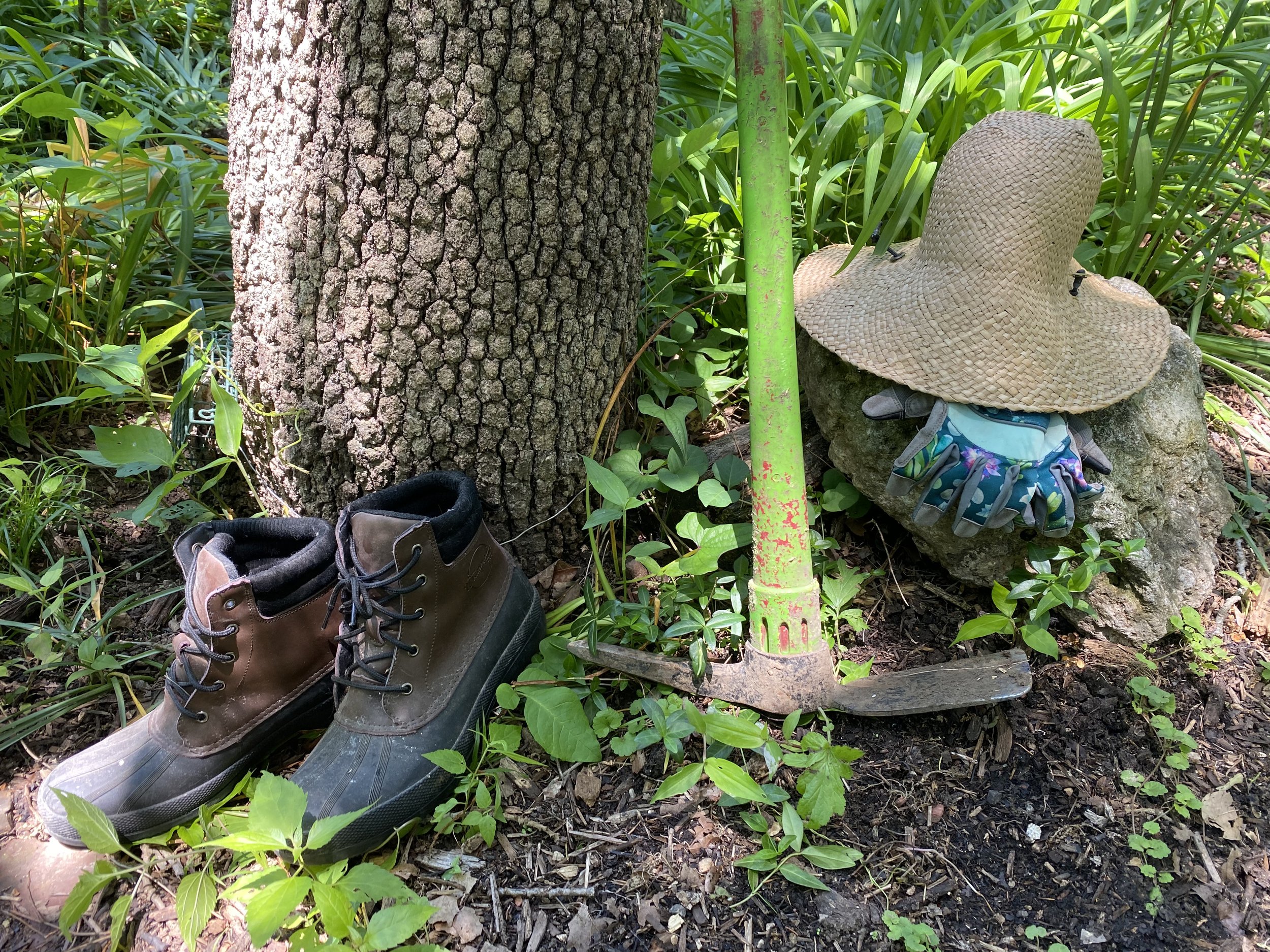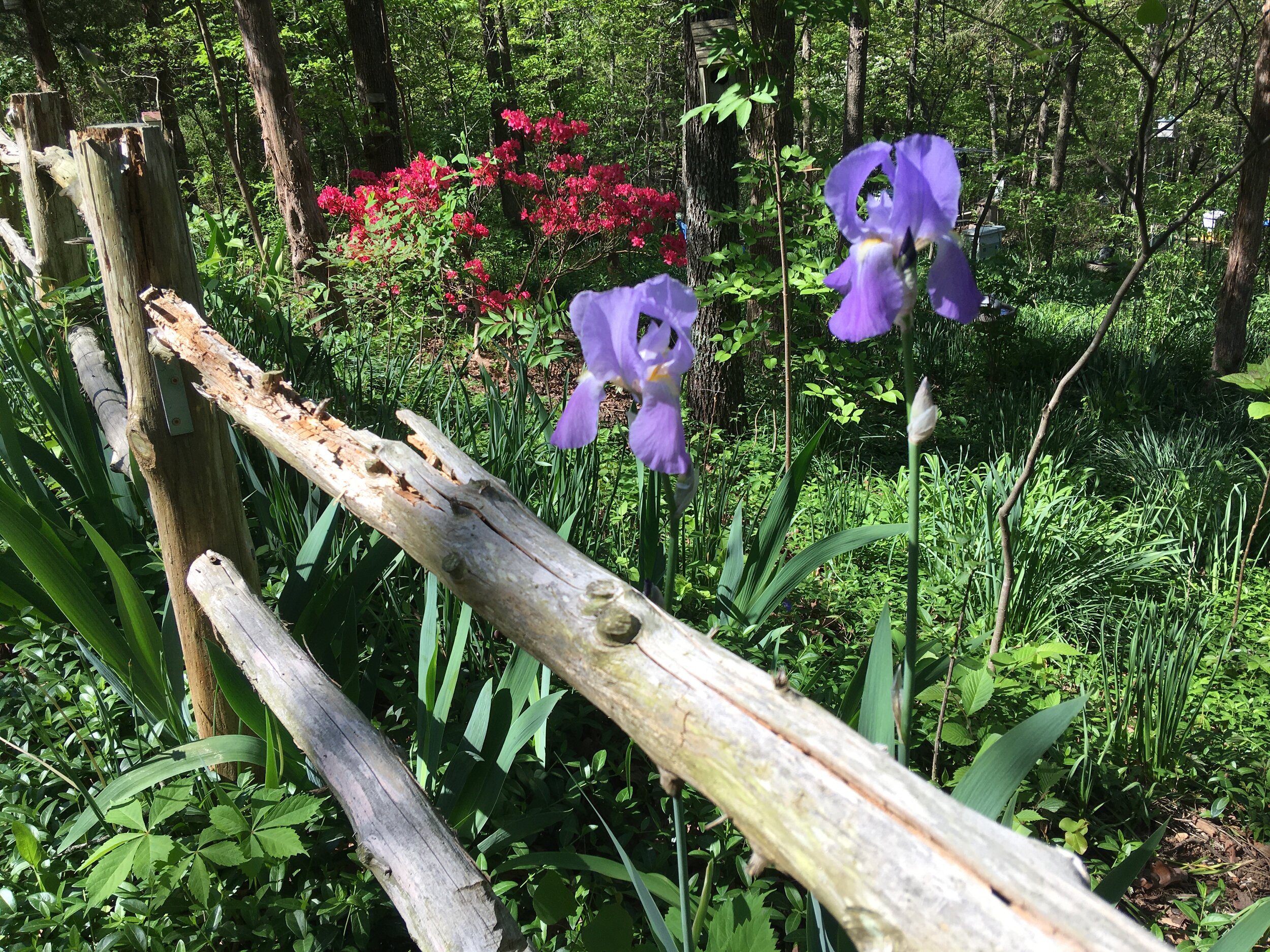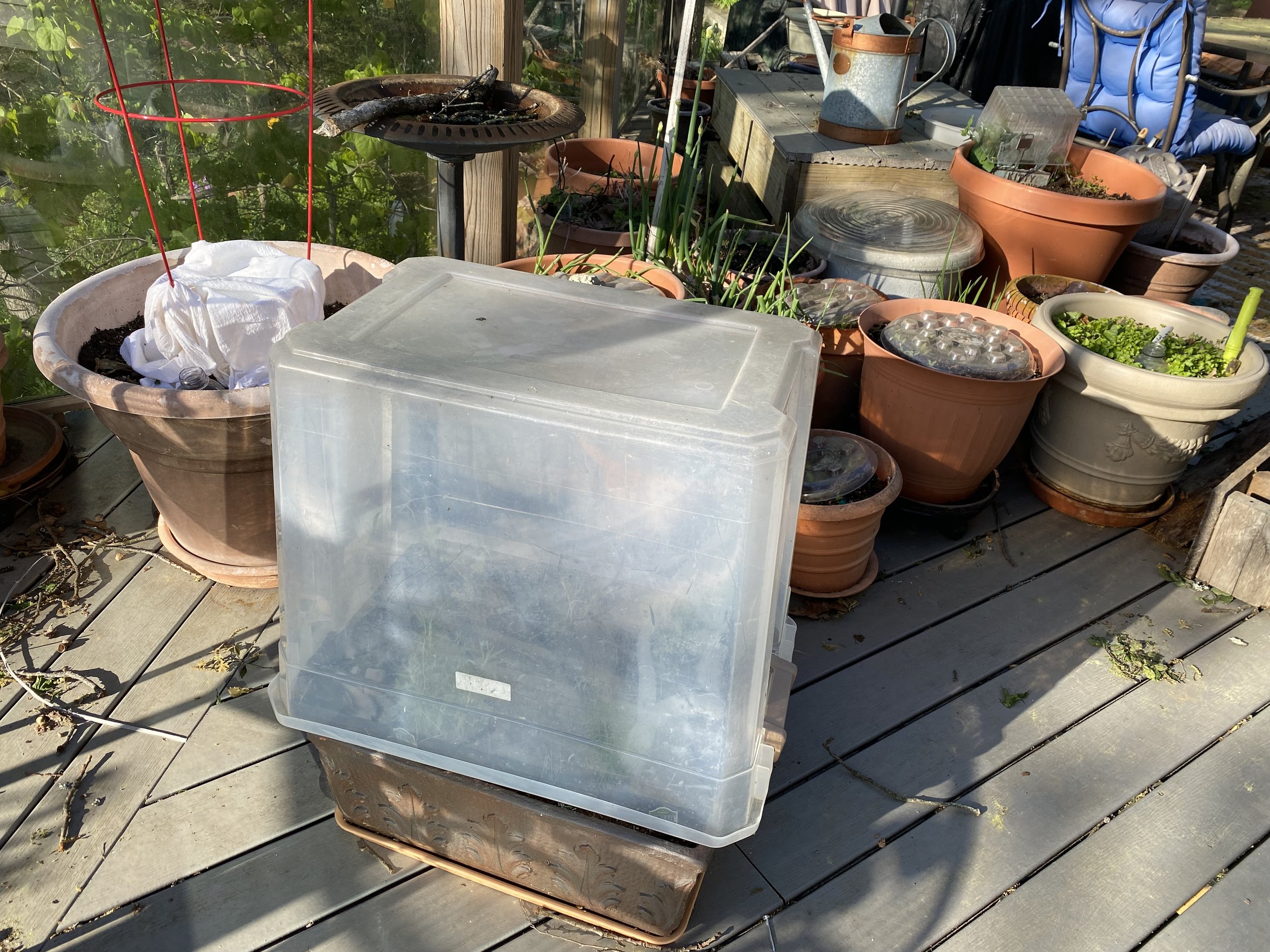Favorite Gardening Tool
/Some of my tools to garden on a Missouri limestone hillside. (Charlotte Ekker Wiggins photo)
Favorite Gardening Tool
It’s interesting to watch a new generation of gardeners with their raised beds, ergonomic hats and specialty tools. Gardening for several decades now on a one-acre Missouri limestone hillside, where my neighbors said nothing would grow, I didn’t have some of those options. I resorted to hardware stores for my gardening gear.
Basic gardening gear today usually includes a cute pair of ergonomic shoes; floral-patterned gloves; a collection of unique purpose hand tools and a pretty, wide-brimmed hat perfect for a tea party.
I love hats and have several pretty gardening ones hanging on my hallway wall. My favorite and most practical gardening hat was a thrift store find. It has an under-the-chin tie. Although not as pretty as most gardening hats, it gives me shade and stays on when winds out of the west quickly move in from the south. Although I can see storms moving in from my vantage point, I don’t always stop gardening preceding an incoming storm. I really should rethink that. Our last storm was an EF1 tornado.
I also have waterproof footwear; heavy duty hunting boots, best for trampling through overgrown patches and staying upright when a steep hillside is wet.
My favorite small gardening gloves with built-in grips were found on sale at a hardware store at the end of the season. I bought all that were left and wouldn’t know where to find more. They have flowers printed on part of the fabric. The more important aspect is that they have a woven fabric on the palms that give me extra grip. One doesn’t think grip is important until one has a hefty tool in hand using my favorite gardening tool: a pick ax.
Actually I have two, one for each side of the garden flanking the house. I grow mostly rocks on this hillside with intermittent hardy flowers. They have to be to survive in this USDA Hardiness zone 6 garden. I still garden as if I am in USDA Hardiness zone 5 because weather has become so unpredictable. I am especially fond of native trees, shrubs and flowers. The one downside is that it can take them a long time for roots to get established. One of my flowering dogwood trees was 3-feet tall for a good 20 years before it added new growth.
Since soil is 45% rock, I may also be contributing to developing new soil by pickaxing this hillside. Soil is not renewable so I include flower borders to protect what little soil I do have. The pick ax helps me build trenches to install downed tree trunks I use for soil guarding borders.
Cut down trees also make for wonderful water-retaining bottoms to new flower beds. I can pickax holes in the trees to make planting spaces until plants can get established roots. See previous reference for how long that can take.
Wood chips from our local recycling center and homemade compost boost the soil. I can easily mix them with the pick ax pointed end.
The pick ax is also handy because I either need to create planting holes or locate them. Either way, the pick ax makes the process faster and easier, as long as it doesn’t hit me on the head as it ricochets from hitting something hard. Now I rummage around to determine what I’m digging into first. Had to relearn that lesson just last week.
With practice, the pick ax is also an excellent tool for digging up plants that need to be moved. I can easily get a ball of soil around their roots. Moving that big blob of plants and soil is a different story. Not to mention having to dig a large enough hole to welcome it.
One of my two pick axes losing their red paint. (Charlotte Ekker Wiggins photo)
Someone else must have my growing conditions because the latest pick axes I bought had a green plastic coating. When I first purchased these, they were frequently lost, or as I prefer to refer to them, still working somewhere.
My handyman surprised me one day by spray painting them red. In the meantime I also developed a system where I would only place them in certain areas so that I didn’t lose them.
Pick axes vary in size and weight. Whatever my green ones are, they give me a good workout best appreciated at the end of a day in the garden.
Time for a new coat of red paint.
This post is part of the #GardenBloggersChallenge sponsored by Gardencomm for the month of May. You are invited to join in and can see more details at gardencomm.org.
























